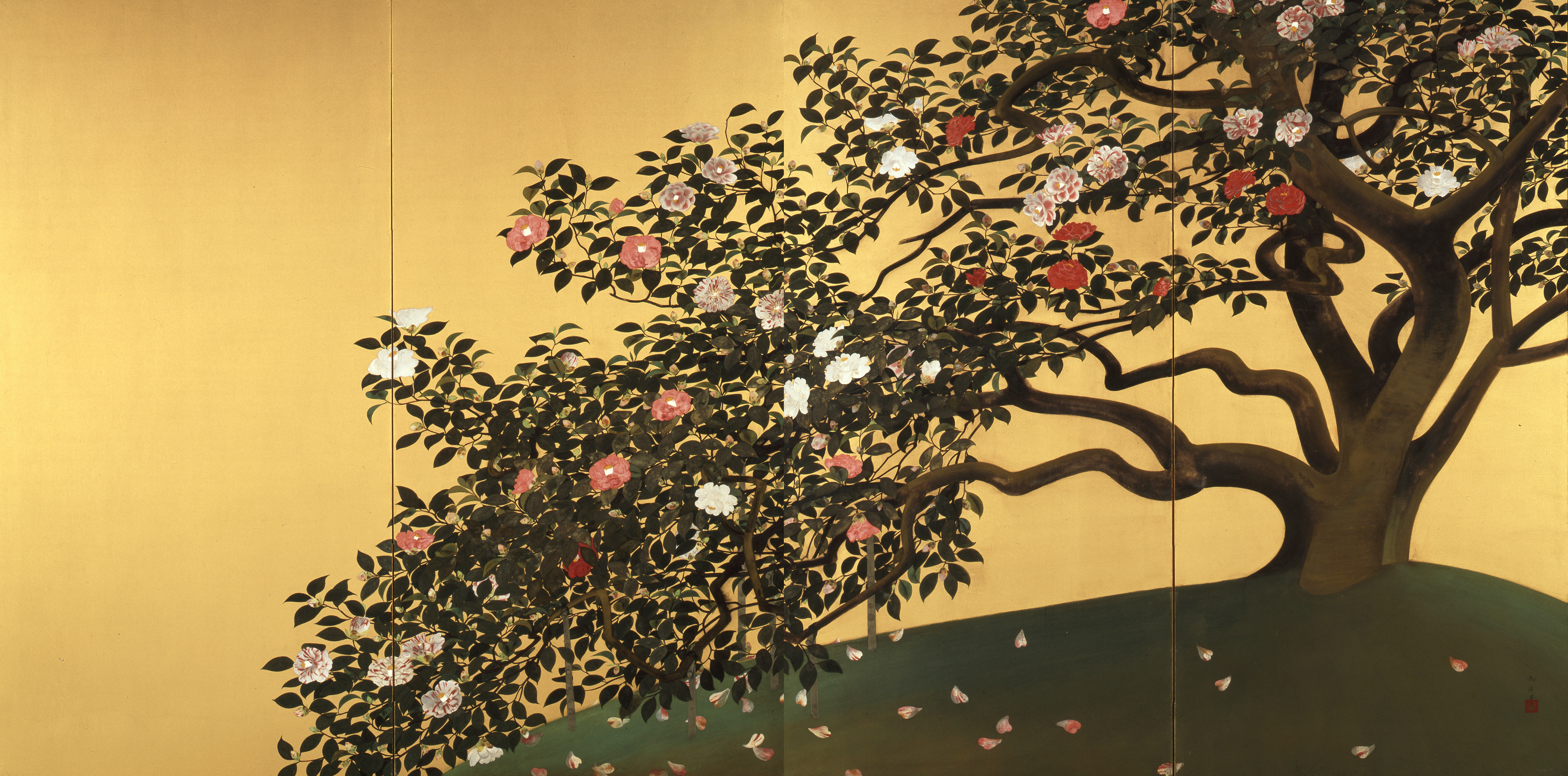Gold and silver have long been used in Japanese painting for their decorative value, on works ranging from intimate handscrolls to large-scale screens. But as the current exhibition at the Yamatane Museum of Art makes amply clear, in the last century or so tradition has been improved upon as modern and contemporary painters developed innovative and creative new ways to use these precious metals.
"Gold and Silver: All That Glitters in Japanese Art, From the Rimpa School to Kayama Matazo" opens with a selection of 20 stellar works that beautifully illustrate the ways in which gold and silver were traditionally used in Japanese painting. The three basic methods, believed to have been transmitted to Japan from China, are sprinkling gold or silver dust (sunago); applying gold or silver leaf (haku) and mixing finely ground gold or silver leaf with glue to make a kind of paint (dei).
The oldest works in this exhibition are portions of 12th-century poems written on paper that was decorated with sprinklings of gold and silver dust and tiny pieces of gold and silver foil. A number of works from the 17th century, including paintings by Iwasa Matabei (1578-1650), show how gold and silver paint were used to express clouds and haze. In addition to their decorative value, glittery clouds and haze were often used to divide scenes in a narrative.



